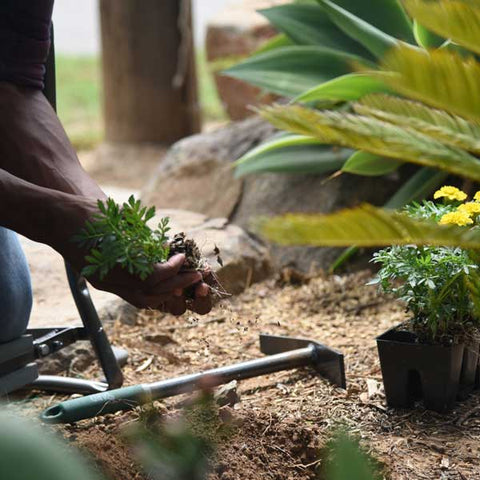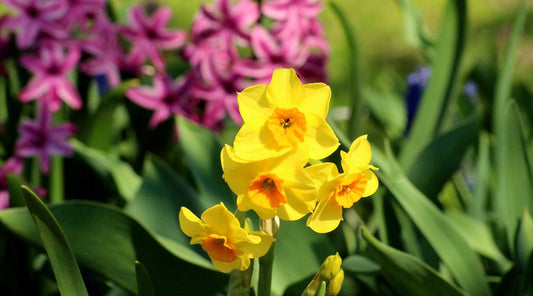Welcome to the wonderful world of companion planting! If you're a home gardener looking to take your green thumb game to the next level, you're in for a treat. In this guide, we'll delve into the art and science of companion planting, revealing how strategic plant pairings can maximize your garden's potential while minimizing pests and diseases. So grab your gardening gloves and let's dive in!
Understanding Plant Relationships:

At the heart of companion planting lies the concept of symbiosis among plants. Just like friends who bring out the best in each other, certain plant combinations have a mutually beneficial relationship. Some plants repel pests that would otherwise munch on their neighbors, while others fix nitrogen in the soil or provide shade and support.
Essential Companion Planting Combinations:
So, which plant pairs make the best buddies in the garden? Let's explore some tried-and-true combinations. For instance, planting aromatic herbs like basil and mint alongside tomatoes can help deter pests while enhancing flavor. And don't forget about the classic trio of corn, beans, and squash, known as the "Three Sisters." Corn provides support for climbing beans, while squash acts as a living mulch, suppressing weeds and conserving moisture.
Companion Planting for Specific Crops:
Each crop has its own preferred companions and adversaries. Take cucumbers, for example. Planting them alongside radishes can confuse cucumber beetles, reducing damage to your precious vines. And if you're growing brassicas like cabbage or broccoli, be sure to interplant them with aromatic herbs like thyme or sage to ward off cabbage moths.
Designing Your Companion Planting Layout:
Now that you've got some plant pairing ideas brewing, it's time to map out your garden layout. Consider factors like plant height, growth habits, and sunlight requirements when arranging your companions. Tall plants like sunflowers can provide shade for heat-sensitive veggies, while low-growing ground covers like nasturtiums help suppress weeds and attract beneficial insects.
Common Mistakes to Avoid:
While companion planting offers a plethora of benefits, there are a few pitfalls to watch out for. One common mistake is overcrowding plants, which can lead to competition for nutrients and space. Remember to give each companion ample room to thrive. Additionally, be mindful of planting incompatible species together, as some plants may actually inhibit each other's growth.
- Tomatoes and Potatoes: Both belong to the nightshade family (Solanaceae) and are susceptible to similar diseases, like blight and nematodes.
- Beans and Onions/Garlic: Beans release substances that can inhibit the growth of onions and garlic, affecting their flavor and yield.
- Cucumbers and Aromatic Herbs: Cucumbers may become bitter when planted near aromatic herbs like sage or thyme.
- Brassicas (Cabbage, Broccoli, Cauliflower) and Strawberries: Brassicas can attract pests like cabbage worms, which may also target strawberry plants.
- Corn and Tomatoes: Both are heavy feeders and may compete for nutrients when planted too closely together.
- Alliums (Onions, Garlic, Leeks) and Legumes (Beans, Peas): Alliums can stunt the growth of legumes due to their allelopathic effects.
- Potatoes and Squash/Pumpkins: Squash vines can spread and shade potato plants, reducing their yield.
- Fennel and Most Other Plants: Fennel secretes chemicals that can inhibit the growth of many other plants, so it's best to keep it separate.
Beyond Plants: Incorporating Companion Elements:
Companion planting isn't limited to just plants. You can also invite beneficial insects and birds into your garden to help maintain a healthy ecosystem. Consider installing birdhouses or setting up insect hotels to attract pollinators and pest predators. And don't forget about physical structures like trellises and arbors, which can provide support for climbing plants while adding vertical interest to your garden. Also don't forget to freshen up your planting gear with garden hand tools from Yard Butler or a new garden hose reel for better storage and watering.
Conclusion: Cultivating Harmony in Your Garden

As you embark on your companion planting journey, remember that experimentation is key. Gardening is as much an art as it is a science, so don't be afraid to get creative and try new combinations. By harnessing the power of plant relationships, you'll not only create a beautiful and bountiful garden but also contribute to a thriving ecosystem right in your backyard.
This friendly guide aims to demystify companion planting, helping you harness the power of plant relationships to create a thriving garden ecosystem right in your backyard. With a sprinkle of creativity and a dash of know-how, you'll be well on your way to cultivating harmony and abundance in your garden. So go ahead, plant those peas next to your carrots, and watch your garden flourish with harmony and abundance. Happy gardening!







